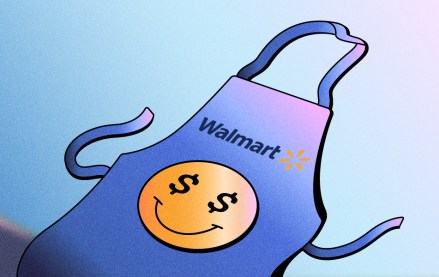Register by Jan 13 to save on passes and connect with marketers from Uber, Bose and more
Heineken is expanding the use of contextual targeting on its brand campaigns

The beverage sector’s in a tough spot right now. In the U.K., customers are drinking less and spending less, a combination that’s dragging on the performance of firms like Diageo, which just lost its CEO. Finding new customers is an imperative.
Heineken U.K. has found one way around that problem — it’s been using a blend of contextual targeting and attention metrics to diversify its media plans, incorporating otherwise overlooked display inventory into campaigns.
According to the brewer’s marketers, the approach led to a 17% jump in brand awareness during an initial test with its premium cider brand Old Mout, staged last summer. The firm is set to roll out the contextual attention solution across its portfolio in the second half of the year.
It’s the latest sign that brands are weaving contextual targeting into the media planning process in order to get media dollars (or in this case, media pounds) working harder — rather than just looking at it as a meal replacement for the third party cookie. Brands like pet food advertiser Lily’s Kitchen, for example, had previously used attention metrics to monitor campaign performance.
The test, staged with contextual ad tech firm GumGum, coincided with the first campaign in two years for Old Mout — a chance for a brand refresh, but also a tricky challenge. The summer months, which traditionally boost cider sales, also bring competitors to market like wasps to a countryside picnic.
“We want to be active around then, because it’s probably the most profitable time of the year,” said Dan Glynn, media buying lead at The Heineken Company, who didn’t provide the campaign’s budget or financial specifics. “The difficulty is that it becomes really saturated.”
The advertiser is no stranger to dabbling in attention, having staged tests last year to measure how eye-catching its Cruzcampo digital ads were, relative to rivals’ efforts. On this occasion, it used GumGum’s “Mindset Graph” tool, which assigned attention scores to media inventory using predictive models based on a 35,000 strong eye-tracking survey panel. Combined with contextual data, it gives advertisers a way of backing up hunches in the media planning process.
“We’re able to build out predictive models based on industry category, based on creative … where we believe the highest level of attention will be garnered based on context,” said Pete Wallace, general manager for EMEA at GumGum.
By uncovering under-used media inventory — in this case, high impact digital display units on the open web — Heineken was able to reach cider consumers where its rivals weren’t and wring more juice out its budget. “We were able to more effectively optimize and drive performance,” said Glynn.
One example of that new supply was travel media. Previously overlooked by the brand, Heineken’s work with GumGum led it to buy more media against travel websites and better reach its audience of female millennial drinkers.
“The open web is still one of the biggest untapped opportunities, and we want to make sure that we’re getting everything we can out of that,” said Glynn.
Heineken’s brand uplift studies conducted showed awareness of Old Mout increased 17% and mental availability among female drinkers, one of the key target audiences for the campaign, rose 23%.
The campaign contributed to a strong year for the cider brand. Despite a muted commercial environment for brewers, Old Mout’s revenues in the U.K. grew over 10% throughout 2024, according to Heineken’s latest annual results, released in April.
The company is currently rolling out the solution on campaigns for portfolio products like Inch’s Cider, Cruzcampo and Birra Moretti, and on Foster’s, Strongbow and the mainline Heineken brands in campaigns launching in the third and fourth quarters of this year. Although Dentsu handles Heineken’s above-the-line media buying (including linear and streaming TV and out-of-home), the brewer worked directly with GumGum on the tool.
Media agencies PHD, Havas Media Network and Mindshare have each since begun using the tool with U.K. clients.
Chris Appleton, head of programmatic at PHD Media U.K., said the agency had used the tool to “surface affinities that will help inform future activation — like discovering that the audience for one of our FMCG clients was over-indexing in PC gaming and travel.” He didn’t name the clients PHD had tested the solution with, but added: “These insights will allow us to meet consumers in unexpected, high-engagement arenas.”
There’s a creative benefit here, too.
“Many of our clients can’t make mid-flight creative changes — it’s just not feasible. But using this tool during planning lets us be more proactive,” said Jacob Kiernan, programmatic account director, Havas Media Group UK. “We can launch with more relevant creative, matched to the audience’s mindset, which ultimately helps capture more attention.”
In Heineken’s case, that’s meant bringing GumGum into conversations with its creative agencies, including St Luke’s and Lucky Generals, enabling them to drum up creative assets that properly suit new media environments the brand is unearthing.
“Being able to add data to creative is such a new way of thinking for that part of the industry, but it’s becoming more and more prevalent,” said Glynn.
More in Marketing

Inside the brand and agency scramble for first-party data in the AI era
Brands are moving faster to own first-party data as AI and privacy changes alter the digital advertising landscape.

Walmart Connect takes a play out of the Amazon playbook to make agentic AI the next battleground in retail media
The next retail media war is between Walmart Connect’s Sparky and Amazon’s Rufus, driven by agentic AI and first-party data.

What does media spend look like for 2026? It could be worse — and it might be
Forecasts for 2026 media spend range from 6.6% on the lower end to over 10% but the primary beneficiaries will be commerce, social and search.








